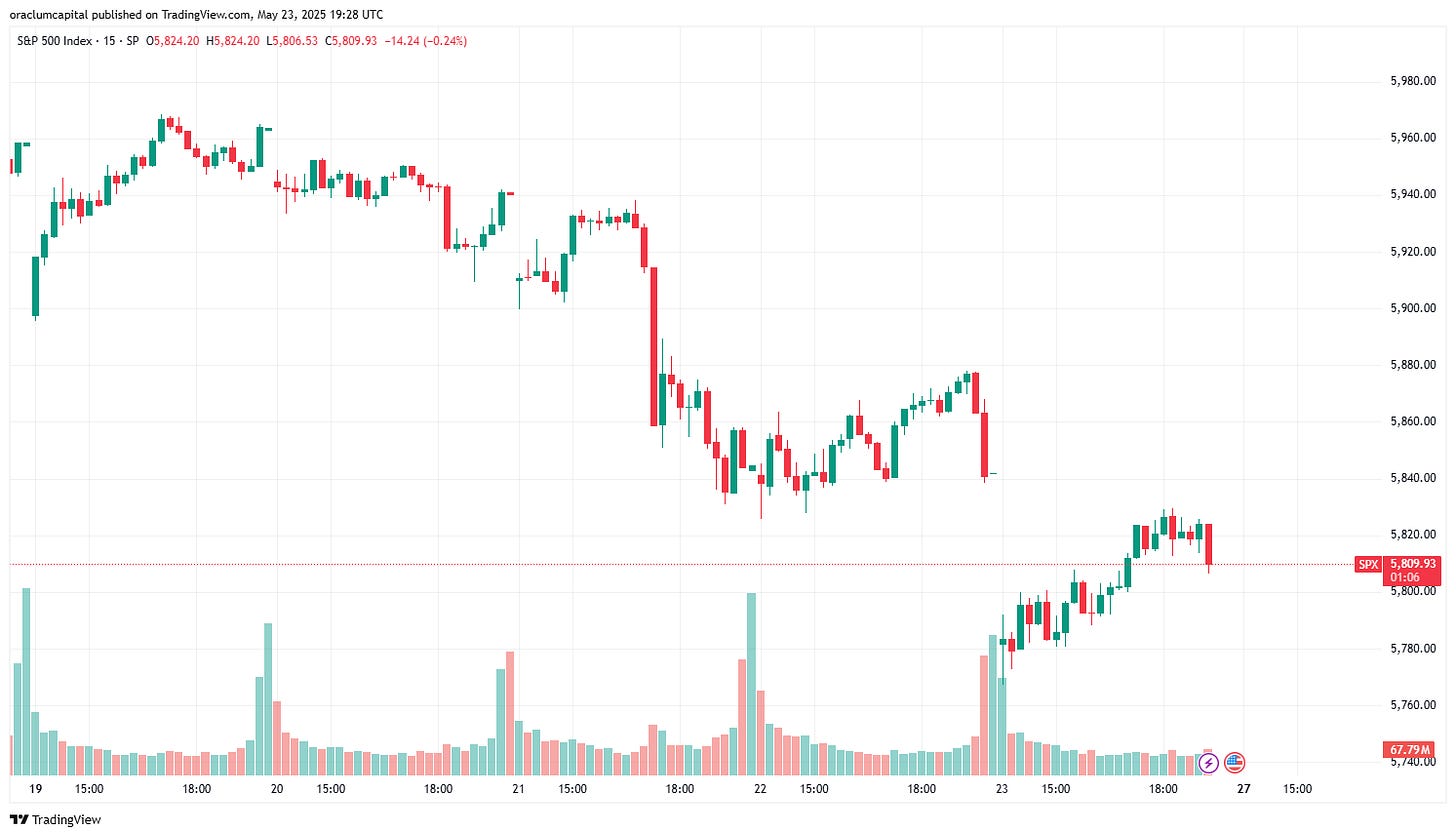We had three potentially strong catalysts this week:
Moody’s US credit rating downgrade was announced last Friday after close, forcing a 1% decline on Monday open.
A weaker bond auction on Wednesday (less demand for 20Y T-bills), which pushed yields up (demand < supply = price down, yields up), and sent equities down another 1% intraday.
Trump threatening a 50% tariff on the EU, after saying that trade talks with them are going nowhere. Another 1% drop before open.
What was the subsequent market reaction to each of these?
On Monday, markets bounced to finished positive for the day ✅
On Wednesday, they kept pushing down, only to bounce back on Thursday, recovering at least half of the decline. 🩸✅
On Friday, a classic “close-the-gap” type of intraday move, where markets kept pushing up, in an attempt to fully discard Trump’s initial negative impact. Even after Trump said that the 50% is here to stay, and is not a negotiating tactics, the markets didn’t really move much at all 🩸✅ The move into the close was more likely driven by other factors.
All this is happening during a “window of weakness” where supporting flows for markets are typically lower than usual (we covered this in detail last time). SPX and NASDAQ both ended the week negative, as did bonds (clearly), while BTC got back to $110,000, and Gold pushed back above $3,300. So overall, it was indeed a weaker market this week, however neither of the three catalysts seemed to have made a lasting impact - at least not to the extent we saw during February, March, or April.
This could indeed support our argument that we are entering a prolonged bullish period (sideways up) that will continue long into the summer.
As we mentioned last week in the paid section:
In the short-term, next two-three weeks, support is lower, so probability of a pull-back is higher, as is the probability of a spike in volatility. But remember, the longer we don’t see anything materializing in the next two weeks, the probability of a pull-back gets increasingly lower.
We got a few pull-backs, but despite having three strong catalysts, the market didn’t really continue its descent. On the contrary, each pullback was a buy-the-dip opportunity, and we kept bouncing.
As mentioned above, the longer we survive the next two weeks without a major catalyst pulling us down, the more likely we get to have a nice, boring, sideways-up summer. Until the next danger period (Aug-Sep).
Help us make this newsletter even better
Share your thoughts by filling out this short survey - it only takes a minute, and your feedback helps us shape future content.





